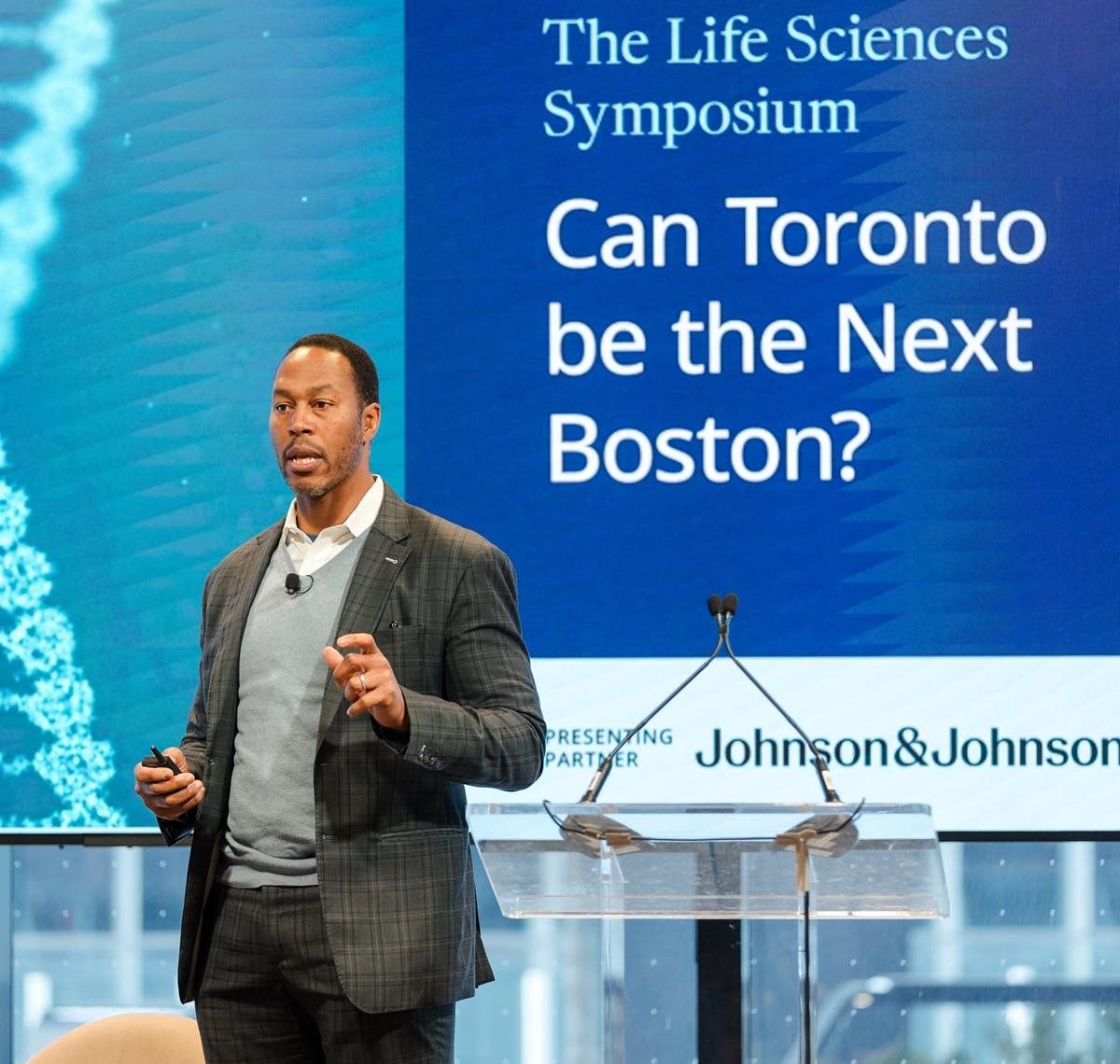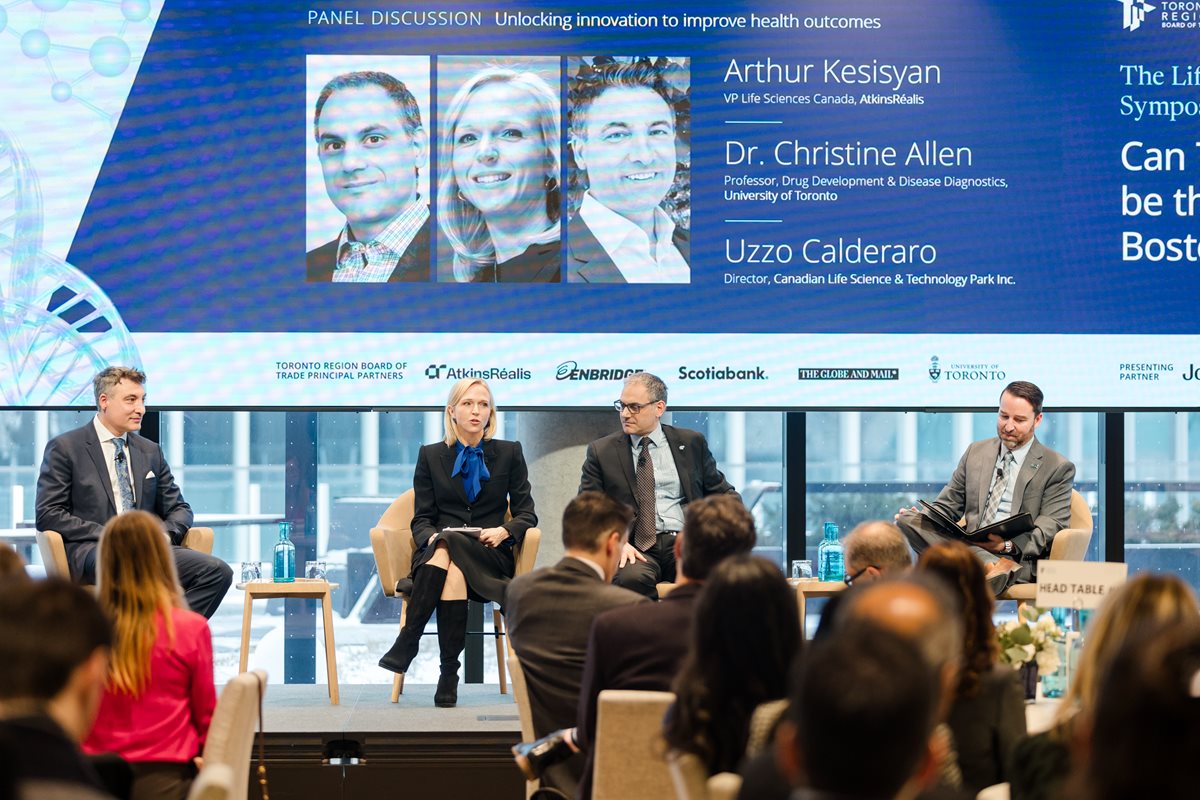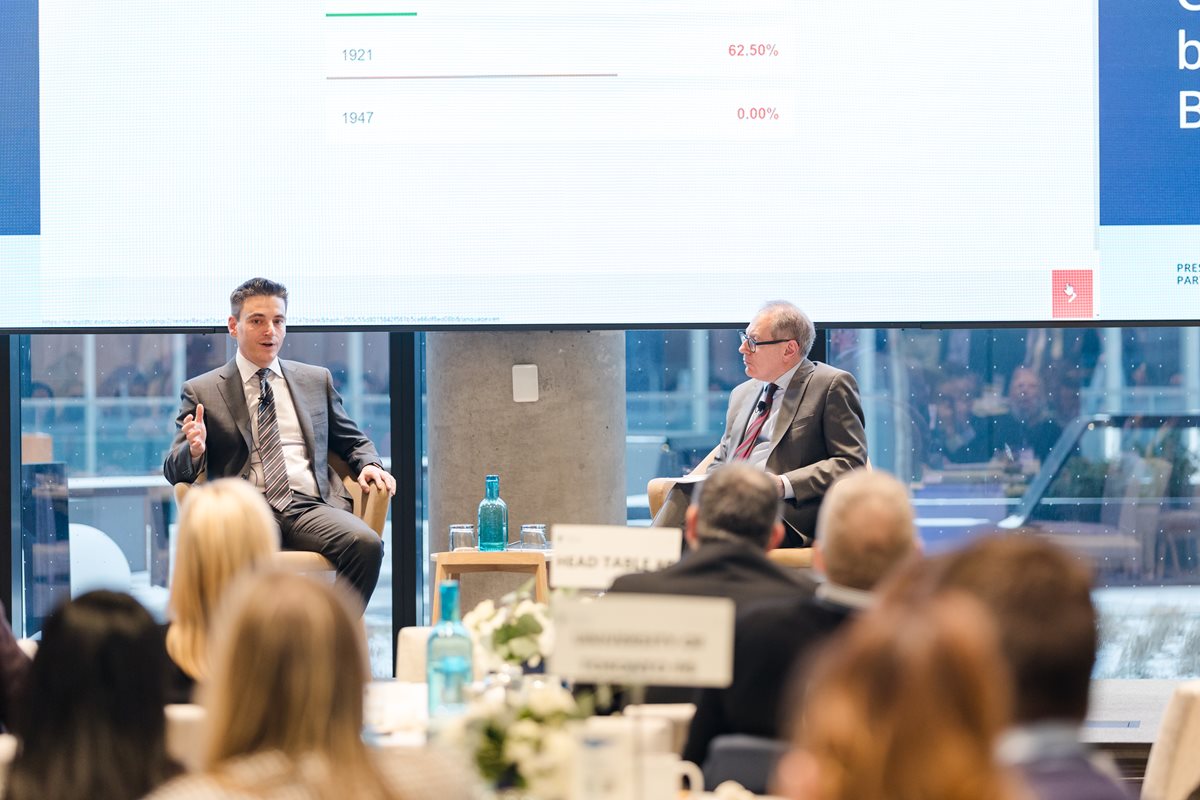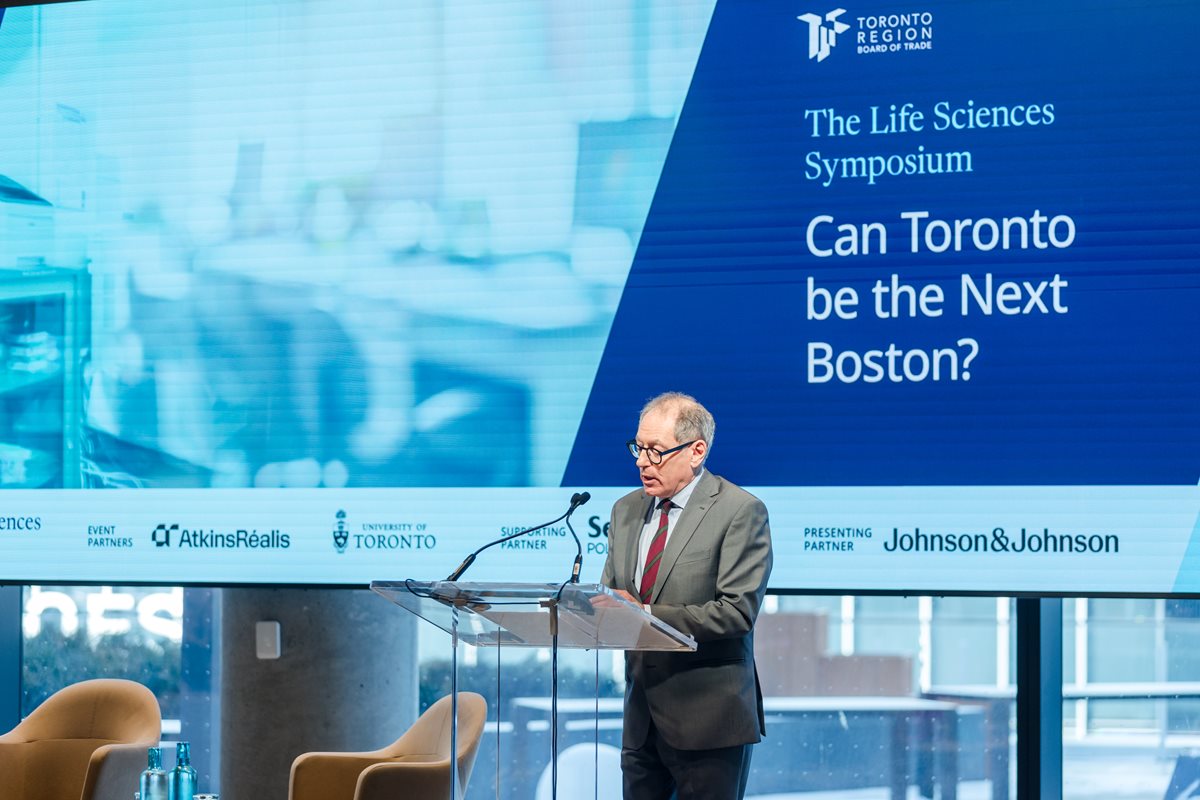Missed out on our Life Sciences Symposium? Watch our video recap below!
The Toronto Region Board of Trade recently gathered to answer a simple question, ‘Can Toronto be the Next Boston?’ The event set a trajectory for further development of Toronto's life sciences sector. The consensus was clear: while global leaders like Boston can serve as inspiration, Toronto has the groundbreaking research, innovative businesses and talented workforce to carve its own unique path in the life sciences landscape.

Life sciences is already a $27.4 billion industry across the region. But, more importantly a thriving life sciences sector has real life outcomes for people. This was highlighted as the day began by Berkeley Vincent, President of Johnson & Johnson Innovative Medicine who pointed to faster diagnosis, earlier intervention, less invasive treatments and an overall better quality of life.
Embracing Our Unique Identity

Throughout the day, speakers emphasized that Toronto doesn't need to replicate another city's life sciences model. The larger the region, the more difficult it is to build a thriving ecosystem conducive to cluster development. But that shouldn’t hold us back. Instead, we should focus on developing a distinct made-in-Ontario version. Opening keynote speaker, Travis McCready, Head of JLL’s Life Sciences, Americas Market challenged the Toronto region to work together by using our massive population & talent pool to become a top-tier life sciences economy. McCready believes the Toronto-Waterloo corridor is more than capable of competing with the world’s largest cities, including Tokyo and Singapore. To capitalize on our geographic scale, he encouraged leaders in the room to foster the creation of multiple life sciences hubs across the GTA, Hamilton and Waterloo areas but to market ourselves as one region. McCready says this can be powered by our dynamic educational institutions, diverse talent pool, and globally recognized research and technological innovation.
To Become a Top-Tier Hub we need Capital

To elevate the region as a leading life sciences hub, capital investment is key. Dr. Christine Allen from the University of Toronto emphasized this during a panel discussion, noting that while a multi-faceted approach is needed for the sector, the primary roadblock is 'capital, capital, and capital.' She pointed out that U.S. venture capitalists often invest in burgeoning Toronto-based life sciences companies, leading to their relocation south. Additionally, the loss of graduate and post-doctoral talent to better-funded U.S. institutions is a concern. Another member of the panel, Uzzo Calderaro, Founder, of The Canadian Life Science and Technology Park expanded on the importance of securing capital. Calderaro says infrastructure leads to talent retention:
“The capital is needed to build infrastructure, and hopefully that infrastructure will retain the talent that’s migrating to the U.S. where the infrastructure exists. That’s to our detriment. Great players in industry are leaving us, and in this small industry, people usually want to follow their mentors. Had they had a place in Canada for mature companies to establish themselves we’d be able to retain our talent and grow it.”
Many participants expressed similar thoughts around the need for additional venture capitalists and angel investors, and to sustain that ecosystem, there was also a lot of talk about how governments need to create an incubator for success.
The Need for Long-Term Government Vision

A key takeaway from the event was the necessity to create a ‘frictionless ecosystem.’ We need a long-term government plan focusing on investment, strategy, and vision. This plan needs to transcend short political cycles, providing the continuity and stability essential for the sector's growth. It requires a commitment to nurture novel technologies, facilitating the conversion of research into scalable manufacturing processes, and ensuring investment in life sciences is both strategic and sustained.
Driving home the need to adopt a Boston-like strategy, the Board of Trade’s President & CEO Giles Gherson pointed to a billion-dollar investment the state of Massachusetts made back in 2008. Those public dollars led to the creation of Kendall Square; a place touted as the most innovation-dense square mile on the planet. This strategic move was part of a larger vision to create a comprehensive economic development plan for Boston’s life sciences sector.
It’s why the Board of Trade is stressing the need to act swiftly here in Canada, ‘We can’t compete with the monumental scale of America’s state and federal investments, but we can strategically and selectively protect and build on the world-class assets that we do have,’ Gherson said.

Away from the mainstage, our event also featured three dynamic breakout sessions on:
- How to address our shrinking availability of wet lab space
- The need to relieve scientists from performing HR job functions
- How to create MedTech clusters across the region

We also put the President and General Manager of Lilly Canada on the hot seat! Kenneth Custer played How Well Do You Know the Region's Life Sciences Sector? This engaging and interactive chat featured insights on the strengths, opportunities, and nuances of the local life sciences ecosystem.
With event partners Johnson & Johnson, Atkins Réalis, the University of Toronto and Seneca Polytechnic, and speakers from Odgers Berndtson, Seeker Labs, FluidAI, Gotcare, OBIO, and Bruce Power this event reminds us of the significance, diversity and potential of the Toronto region’s life sciences sector.
